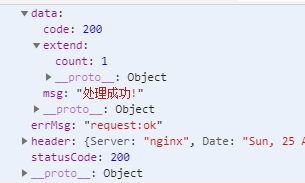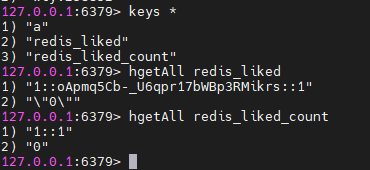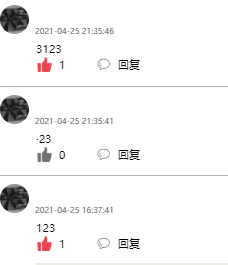SpringBoot实现物品点赞功能
效果:




功能:
首先还是一个先发请求返回数据,但是先数据存到了redis中,然后使用springboot定时任务每隔一定时间将数据存到mysql中。这样可以防止redis挂掉之后数据丢失。
数据库设计:
 MySQL使用了一张表和另外几张表的一个字段,一张存放点赞信息,就是谁点赞了谁在啥时候。字段存放点赞数量。就是物品信息表。评论表这些。
MySQL使用了一张表和另外几张表的一个字段,一张存放点赞信息,就是谁点赞了谁在啥时候。字段存放点赞数量。就是物品信息表。评论表这些。
 redis,使用的是hash数据结构,redis_liked存放点赞数据,redis_liked_count存放点赞数量数据。
redis,使用的是hash数据结构,redis_liked存放点赞数据,redis_liked_count存放点赞数量数据。
解释 :
对于 “1::字符串::1 ” 这个是一种存放方式,前面1为objid就是被点赞物品或者评论id,字符串为微信openid每个用户唯一id,后面1为类型区分点赞的是物品还是主评论,子评论。
对于 "“0"” 这个数据则是点赞的状态,1为点赞0为取消点赞对于"1::1"这个前面1是objid就是物品或者子、主评论id,后面则是区别是哪个类型。“0”就是点赞数量。



 后台代码:
后台代码:
前端入口代码:
package com.w.wx.controller;
import com.w.wx.domain.Msg;
import com.w.wx.service.impls.RedisServiceImpl;
import lombok.extern.slf4j.Slf4j;
import org.springframework.beans.factory.annotation.Autowired;
import org.springframework.web.bind.annotation.RequestMapping;
import org.springframework.web.bind.annotation.RestController;
@Slf4j
@RestController
@RequestMapping("/wx/liked")
public class LikedContro {
@Autowired
private RedisServiceImpl redisService;
/**
* 保存点赞数据到redis
* 点赞数+1
* 同一个不能点赞两次
* @param objId
* @param openid
* @param type
* @return
*/
@RequestMapping("like")
public Msg saveLikedToRedis(Integer objId,String openid , String type){
redisService.incrementLikedCount(objId, type, openid);
redisService.saveLikedToRedis(objId,openid,type);
int oneInfoCount = redisService.getOneInfoCount(objId, type);
return Msg.success().add("count",oneInfoCount);
}
@RequestMapping("unlike")
public Msg decrementLikedCount(Integer objId,String openid,String type){
redisService.decrementLikedCount(objId,type,openid);
redisService.unlikeFromRedis(objId,openid,type);
int oneInfoCount = redisService.getOneInfoCount(objId, type);
return Msg.success().add("count",oneInfoCount);
}
//恢复redis
@RequestMapping("restore")
public Msg restoreRedisCountInfo(){
redisService.savaInfoFromDb2Re(0);
redisService.savaInfoFromDb2Re(1);
redisService.savaInfoFromDb2Re(2);
return Msg.success();
}
}
操作redis代码:
package com.w.wx.service.impls;
import com.w.wx.mapper.LikedMapper;
import com.w.wx.domain.Liked;
import com.w.wx.service.ImagesService;
import com.w.wx.service.RedisService;
import com.w.wx.utils.RedisKeyUtils;
import lombok.extern.slf4j.Slf4j;
import org.springframework.beans.factory.annotation.Autowired;
import org.springframework.data.redis.core.Cursor;
import org.springframework.data.redis.core.RedisTemplate;
import org.springframework.data.redis.core.ScanOptions;
import org.springframework.stereotype.Service;
import java.util.ArrayList;
import java.util.Iterator;
import java.util.List;
import java.util.Map;
@Service
@Slf4j
public class RedisServiceImpl implements RedisService {
@Autowired
private RedisTemplate redisTemplate







 最低0.47元/天 解锁文章
最低0.47元/天 解锁文章
















 2978
2978











 被折叠的 条评论
为什么被折叠?
被折叠的 条评论
为什么被折叠?










